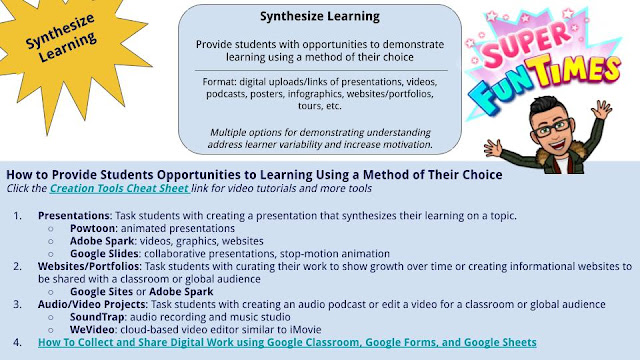
When I taught Global History, I would, like most of you, task students to work individually or in groups to create some kind of presentation that synthesized their learning and deliver it in front of the class. I can't tell you how many PowerPoint presentations I sat through in which students would read bulleted lists of information to the class! Since that time, I have come across a variety of tips to help students better prepare their presentations and delivery, the best of which is Guy Kawasaki's 10 - 20 - 30 rule for "pitching" ideas.
Instructional Technology has come a long way since PowerPoint was one of the only tools of the trade. Check out my Creation Tools Cheat Sheet that offers students "voice and choice" in selecting from a variety of multimedia tools they can use to demonstrate learning. You are welcome to share this document with your students--it includes links to each tool's website as well as video tutorials to explain how each tool works. Teachers, of course, should design specific rubrics to help students design digital projects that meet expectations.
Collecting and Sharing Digital Learning Projects
So how should teachers collect and share student work now that the audience is no longer face-to-face? The answer is to leverage Google Forms to collect links to student work and Google Sheets to share the links with the class. Check out the video example to see how it can be done.
